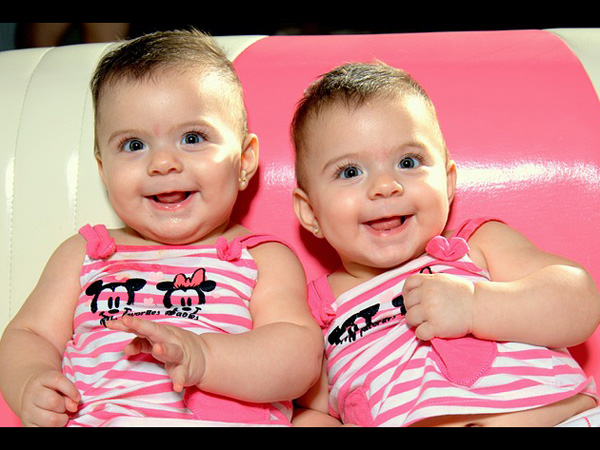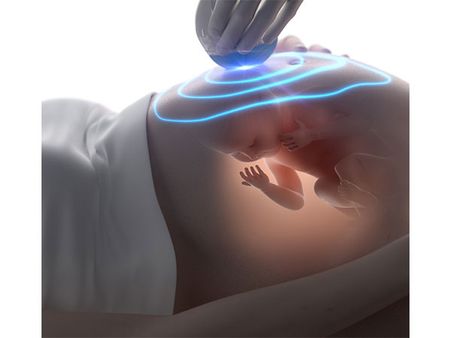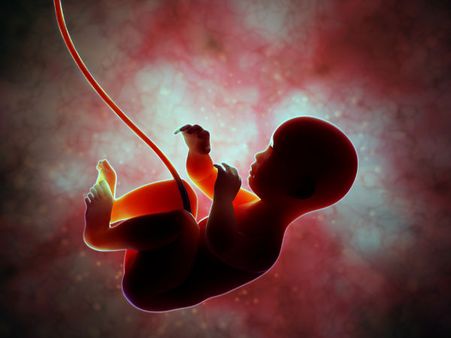Just In
- 4 hrs ago

- 8 hrs ago

- 10 hrs ago

- 11 hrs ago

Don't Miss
- News
 Lok Sabha Elections 2024: BJP's Moradabad Candidate Kunwar Sarvesh Kumar Dies Day After Polling
Lok Sabha Elections 2024: BJP's Moradabad Candidate Kunwar Sarvesh Kumar Dies Day After Polling - Movies
 When Aishwarya Rai Gives ‘Classy Slap’ On Journalist’s Face For Asking Her To Pose Nude, Watch Video
When Aishwarya Rai Gives ‘Classy Slap’ On Journalist’s Face For Asking Her To Pose Nude, Watch Video - Sports
 KKR vs RCB: Twitter Hails as Virat Kohli and Gautam Gambhir Spotted having 'Friendly' Chat
KKR vs RCB: Twitter Hails as Virat Kohli and Gautam Gambhir Spotted having 'Friendly' Chat - Education
 Assam Class 10 Result 2024 Declared: Anurag Emerged as the Top Performer With 593 Marks
Assam Class 10 Result 2024 Declared: Anurag Emerged as the Top Performer With 593 Marks - Finance
 2 Tata Group Dividend Stocks To Buy/Sell After Q4 Results, Dividend Announcement
2 Tata Group Dividend Stocks To Buy/Sell After Q4 Results, Dividend Announcement - Automobiles
 Tata Altroz Records a 55% Sales Growth in March 2024
Tata Altroz Records a 55% Sales Growth in March 2024 - Technology
 Best Noise-Cancelling Earbuds Under Rs 5,000: CMF Buds Pro, Redmi Buds 5, Realme Buds Air 5, and More
Best Noise-Cancelling Earbuds Under Rs 5,000: CMF Buds Pro, Redmi Buds 5, Realme Buds Air 5, and More - Travel
 Journey From Delhi To Ooty: Top Transport Options And Attractions
Journey From Delhi To Ooty: Top Transport Options And Attractions
Monochorionic Monoamniotic (MoMo) Twins: Diagnosis, Complications And Treatment
Pregnancy is a journey towards motherhood with several ups and downs, not just in terms of health but from the emotional perspective as well. In spite of taking utmost care of one's health, there could be unavoidable circumstances where overwhelming emotions take over us and we are highly anxious about the health of the little one who is on his or her way to enter the world.
Conceiving is a wonderful experience, especially if you have been waiting for it for a while. More so when you are pregnant with twins. Carrying twins seems to be a double joyous moment. However, most pregnancies where the mother carries more than one foetus is termed high-risk. This is so because of the associated complications that the mother and the newborn can face during pregnancy or just after delivery.

One such high-risk pregnancy is when the mother carries MoMo twins. With this form of pregnancy, it becomes all the more important for the parents to be aware of the complications that might arise and how to deal with them. Read on to know more about MoMo twins, how they are formed and diagnosed, complications associated with this form of a pregnancy and how it can be handled and treated.

What Are Momo Twins?
MoMo twins are monochorionic monoamniotic babies. Monochorionic would mean single egg covering sac and monoamniotic would mean single amniotic sac. MoMo twins, therefore, mean that they are babies forming in the same amniotic sac and have just the single covering egg sac. They are otherwise also called mono identical twins. This is most often referred to as a high-risk pregnancy.

How Do Momo Twins Form?
After
fertilization
(on
the
egg
and
the
sperm
uniting),
the
embryo
gets
covered
with
an
egg
sac
(chorion).
This
protects
the
embryo
while
it
is
developing.
Twins
technically
happen
when
there
is
a
split
of
the
embryo
when
in
the
uterus.
The
formation
of
MoMo
twins
occurs
when
the
embryo
actually
emerges
out
as
two
different
embryos
during
its
growing
phase.
Here,
each
embryo
has
a
placenta
developing
that
connects
to
the
uterus
separately.
In
case
each
embryo
grows
in
its
own
amniotic
sac
then
they
would
have
been
referred
to
as
diamniotic
(while
sharing
the
egg
sac
till
they
advance
into
their
sacs).
But
when
one
amniotic
sac
exists,
both
the
embryos
grow
in
that
leading
to
the
formation
of
identical
twins
who
are
referred
to
as
MoMo
twins.

How Are MoMo Twins Diagnosed?
During pregnancy, you would be going through your routine ultrasound examinations and this is the only way the presence of MoMo twins can be detected. After detecting the presence of MoMo twins, high-resolution scanning equipment with ultrasound Doppler sound waves are used in order to study the growth and development of the foetus.
A perinatologist (someone who is a specialist with such high-risk MoMo twin pregnancies) would need to provide you with regular and frequent checkups so that thorough monitoring can be conducted throughout the term of your pregnancy.
During early pregnancy, there could be a misdiagnosis as the separating amniotic membrane would be very fragile and the detection of the presence of MoMo twins could be missed. However, later scanning reports could reveal monochorionic, diamniotic pregnancy (when a dividing membrane is noticed).
Complications With Momo Twins
The fact that the twins connect to the placenta via their respective umbilical cords could be a cause of concern and lead to several complications during pregnancy as mentioned below.

• Cord enlargement
When twins share the same amniotic sac, there could be a risk of cord enlargement. The umbilical cords of the babies could get entangled as there is no membrane in the amniotic sac that could separate the two. Entangling of umbilical cord could result in reduced blood supply and nourishment to the babies. Labour and delivery could further get complicated in case the twins get entangled or tied to each other while in the uterus. This is so because normal labour could mean that one of the twins might have a chance of getting stuck in the birth canal. This can cause foetal distress and in worst cases - death of one or both the twins.
• Cord compression
Sharing of the amniotic sac by the twins increases the chances of one pressing against the other's umbilical cord. This is most likely to happen during the rigorous internal movement that either of the babies make. Constant pressure on the umbilical cord can lead to the blood supply and nutrients being cut off causing foetal death.

• Preterm birth
Most of the twin pregnancies result in preterm birth and with MoMo twins, the chances are even higher. A full-term pregnancy is risky and, therefore, MoMo twins are usually advised to being born preterm. A full-term pregnancy is termed risky due to the aspects associated with cord enlargement and cord compression. Most of the time, a C-section is performed to deliver the babies. The surgical delivery would ideally be done after the completion of 34 weeks of pregnancy. In some rare cases, MoMo twins might have to be delivered as early as 26 weeks of pregnancy. The determination of when delivery should occur depends on the risks associated with the pregnancy. Your doctor would be closely monitoring your health to make a decision as to when it would be right to deliver the twins. However, such early deliveries would mean that the delivered twins would have to face life-threatening complications and would also need to spend quite some time in the neonatal intensive care unit under close supervision by the experts.

• Twin to twin transfusion syndrome
When any one twin happens to receive the major portion of the nourishment when in the womb, it can lead to the other twin being undernourished. This is referred to as the twin to twin transfusion syndrome. The diagnosis of this is technically done by observing the physical development of the twins during the scanning sessions.
Treatment
Potential problems with the MoMo twins are identified through the use of high-resolution Doppler ultrasound imaging system. This is a non-stress test and done regularly to assess the growth of the babies. The results of this test help the doctor to determine if there is a need for immediate delivery, especially in cases where cord compression occurs.
Usually, your doctor would consult a perinatologist (expert with twin delivery) in order to determine the level of risks associated with the pregnancy and reach a conclusive decision depending on the threat to the lives of the babies and the mother.
MoMo twins who successfully reach the 32-week mark of pregnancy are considered fine to be delivered after the administration of steroids for their lung development at birth. A C-section is the ideal option so that cord prolapse can be prevented. Cord prolapse most likely occurs when the second baby's cord gets expelled after the first twin is delivered.
Of late, a drug is being used to reduce the amount of fluid in the amniotic sac. This facilitates the reduction of the excessive foetal movement and in turn preventing cases of cord compression or cord enlargement. However, use of this drug is not yet confirmed as research about its pros and cons is still underway.
Regular foetal monitoring is highly essential in case of MoMo twins. There should be bi-weekly control of the foetal heart rate and the movement once the 26-week mark of pregnancy is reached. It is advised that the mother is hospitalized after the 28-week mark.

Are Momo Twins Rare?
Yes, they are extremely rare. About only 1 percent of twins are actually monoamniotic.
Do Momo Twins Have The Same Fingerprints?
The reason that identical twins share the same genetics makes many people believe that they might have the same fingerprints. However, minor differences in the womb actually result in similar, yet different fingerprints in the twins. Fingerprints are attached to simple things, such as slight fluctuations in hormone levels. Hence, each twin would have their own unique fingerprint.


Can Momo Twins Be A Boy And A Girl?
No, MoMo twins are always the same gender baby. This is because the same embryo splits to form each twin.
In case of MoMo twin pregnancy, one would generally be advised to consult a perinatologist rather than an obstetrician. This is because being a high-risk pregnancy, you would need a specialist to monitor your health.
-
 healthSolar Eclipse 2024: Dos and Don'ts for Pregnant Women During Surya Grahan
healthSolar Eclipse 2024: Dos and Don'ts for Pregnant Women During Surya Grahan -
 healthLunar Eclipse 2024: Dos And Don'ts For Pregnant Woman During Chandra Grahan
healthLunar Eclipse 2024: Dos And Don'ts For Pregnant Woman During Chandra Grahan -
 fashionDeepika Padukone-Ranveer Singh Announce Pregnancy: 6 Maternity Outfit Ideas For The Modern Mom-to-Be
fashionDeepika Padukone-Ranveer Singh Announce Pregnancy: 6 Maternity Outfit Ideas For The Modern Mom-to-Be -
 healthLate Singer Sidhu Moose Wala's Mother Is Pregnant Through IVF, Know What It Is And How To Prepare For It
healthLate Singer Sidhu Moose Wala's Mother Is Pregnant Through IVF, Know What It Is And How To Prepare For It -
 insyncVirat Kohli And Anushka Sharma Name Their Baby Boy 'Akaay', Know What This Beautiful Name Means?
insyncVirat Kohli And Anushka Sharma Name Their Baby Boy 'Akaay', Know What This Beautiful Name Means? -
 pregnancy parentingMaternal Health Awareness Day 2024: 15 Foods That Boost Maternal Health
pregnancy parentingMaternal Health Awareness Day 2024: 15 Foods That Boost Maternal Health -
 pregnancy parentingFrom Contractions To Water Breaking: Knowing When It's Time For The Hospital During Pregnancy
pregnancy parentingFrom Contractions To Water Breaking: Knowing When It's Time For The Hospital During Pregnancy -
 pregnancy parentingBirth Control Pills Can Affect This Primary Function In Women: Find Out What
pregnancy parentingBirth Control Pills Can Affect This Primary Function In Women: Find Out What -
 pregnancy parentingTwo Wombs, Four Hearts: US Mom's Extraordinary Double Uterus Pregnancy
pregnancy parentingTwo Wombs, Four Hearts: US Mom's Extraordinary Double Uterus Pregnancy -
 healthExclusive: A Pregnant Mom Can Posses These Maternal, Fetal Health Risks If Exposed To Air Pollution
healthExclusive: A Pregnant Mom Can Posses These Maternal, Fetal Health Risks If Exposed To Air Pollution -
 pregnancy parentingDelhi Air Pollution: Pregnant Women Must Follow These 4 Things!
pregnancy parentingDelhi Air Pollution: Pregnant Women Must Follow These 4 Things! -
 pregnancy parentingDelhi Air Quality Crisis: How Air Pollution Can Affect Unborn And Newborn Babies? Precaution Tips For Pregnant
pregnancy parentingDelhi Air Quality Crisis: How Air Pollution Can Affect Unborn And Newborn Babies? Precaution Tips For Pregnant


 Click it and Unblock the Notifications
Click it and Unblock the Notifications



